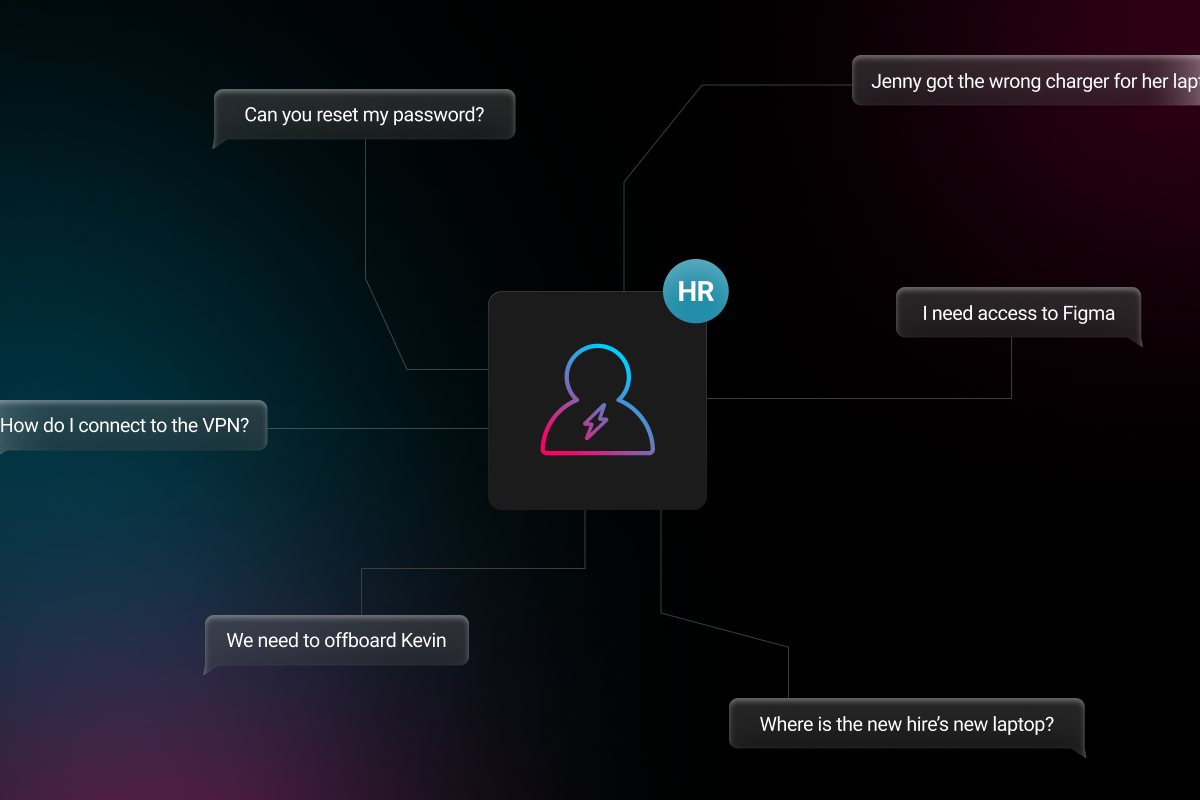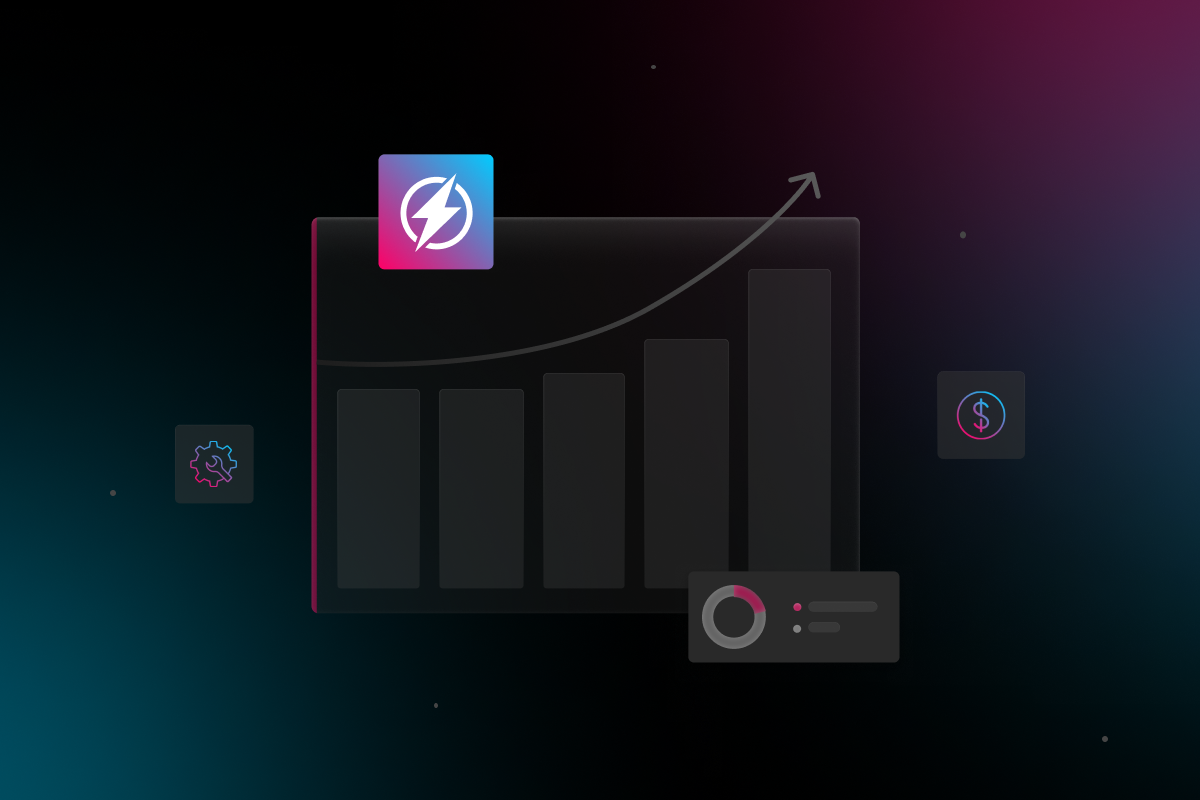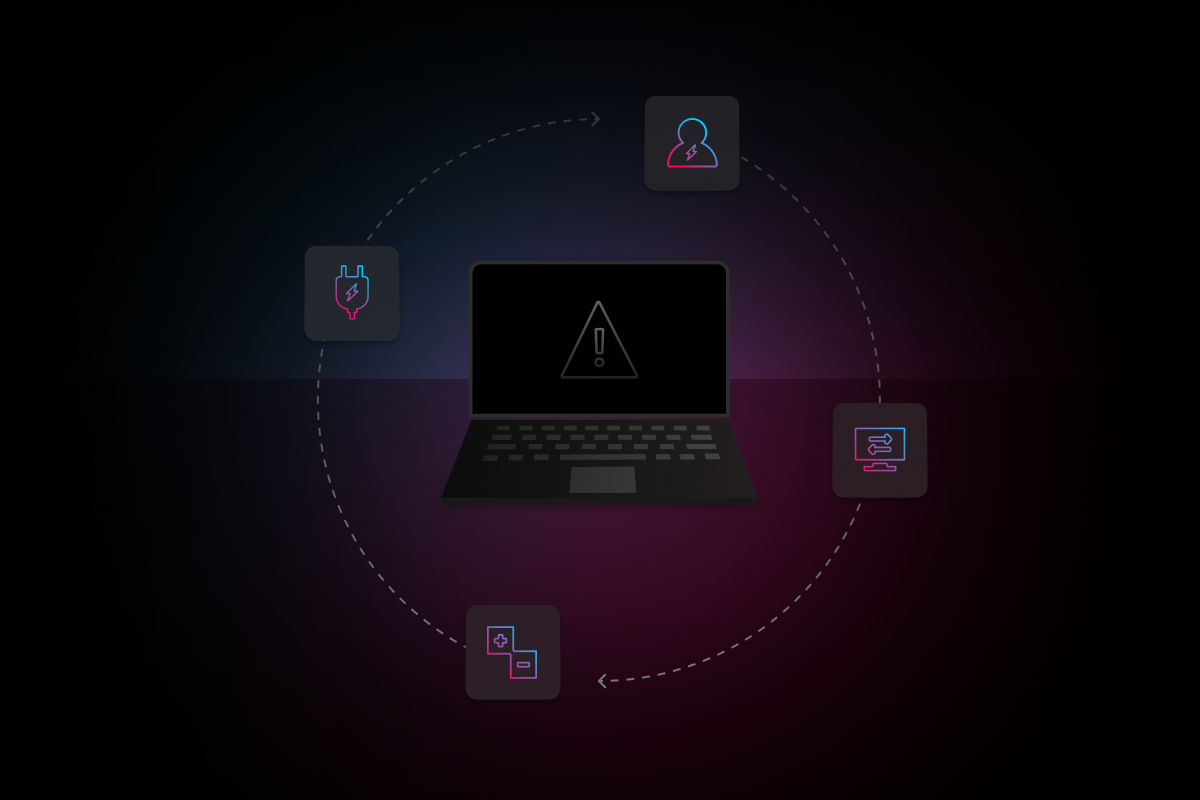
An IT department’s responsibilities and structure are driven by a range of factors, from company size and business goals, to industry compliance requirements and security vulnerabilities.
Many small and medium-sized businesses (SMBs), don’t have a dedicated IT professional or team. IT responsibilities are shared by multiple non-technical employees in different departments. For example, HR might handle onboarding, Ops oversees hardware procurement, and the CEO manages security. However, juggling IT alongside competing tasks can lead to critical gaps—unless efficient processes and solutions are in place.
Even though SMBs may not have the resources to build an IT department, they still have IT and security needs to run their business effectively and securely. Let’s take a look at the traditional roles and responsibilities within an enterprise IT team, and explore how SMBs can adopt a more tailored and cost effective approach. With an IT platform like the Electric IT Hub, SMBs can take control of IT, automate manual processes, and save valuable time—without the need for technical expertise
What is an IT Department?
An IT department is the division within an organization that oversees technology-related tasks and responsibilities. In startups and small businesses, the IT department may consist of a single person who wears a variety of hats, or there may be no IT team at all. In larger corporations, the IT department is often split into multiple specialized subdivisions with a large staff.
What Does the IT Department Do?
No matter how many people you have on your team, IT management is key to keep your business secure, compliant, and operational. Here are some of the key responsibilities that SMBs must address, whether through a dedicated IT department or an IT management solution:
1. Cybersecurity
IT departments play a critical role in maintaining the security of an organization’s network. This includes implementing firewalls, antivirus software, and other security measures to protect against cyber threats. IT departments also manage user access to the network, ensuring only authorized users have access to sensitive data while maintaining compliance with the relevant regulations. With Electric, SMBs can implement best-in-class security solutions and seamlessly manage user access permissions, all in one platform.
2. Application Management
IT departments are responsible for managing the organization’s critical apps and communication systems, including email, instant messaging, and video conferencing. IT departments ensure that these systems are available and reliable, and that they are secured against hacking and other cyber threats. As part of the onboarding process, IT departments also set employees up with login credentials and appropriate levels of access to the relevant apps. For SMBs, Electric automates and simplifies all of these aspects of application management.
3. Device Management
IT departments are responsible for overseeing all of the hardware used within an organization. This includes provisioning devices, tracking device inventory, and monitoring device health. IT departments are also responsible for standardizing security measures and taking action to lock and wipe devices in the event of loss or theft. As an alternative to an IT department, Electric empowers SMBs to keep devices secure, healthy, and up-to-date with simplified mobile device management.
4. Hardware Procurement
In many SMBs, the IT department also handles hardware procurement, from laptops and monitors to keyboards and mice. In the past, this responsibility fell to the IT department because it required a degree of technical knowledge and insight. However, with Electric’s Hardware Store, SMBs can choose from a curated catalog of brand-agnostic devices to easily find the best hardware for their needs. From purchase and shipping to warehousing and reassignment, the entire device lifecycle is effortlessly managed from a single platform.
5. On/offboarding
IT departments play a critical role in employee onboarding. Beyond team introductions and orientation, new hires need access to the right devices, apps, and systems from day one. Likewise, when an employee leaves the organization, the IT department is often responsible for revoking access and reassigning hardware. With Electric, SMBs no longer require an IT department to perform these tasks. By seamlessly integrating HR and IT workflows, People teams can automate onboarding and offboarding to save time and enhance the employee experience.
IT Department Structure and Roles
The structure of an IT department varies depending on a business’s size and needs. In this list, we will define the roles that are typically found in an enterprise-level IT department.
Chief Technology Officer (CTO)
The CTO is the head of the IT department, responsible for developing and implementing the company’s IT strategy. They work closely with other senior executives to ensure the IT department and business tech stack are in alignment with the organization’s goals, and they oversee the overall IT budget and resources.
IT Manager
The IT Manager’s responsibilities include general day-to-day operations of the IT department, managing the IT team, and ensuring that all IT projects are completed on time and within budget. They are also the main point of contact when ensuring all IT infrastructure is running smoothly and securely.
Network Administrator
The Network Administrator is the role in the IT department responsible for managing the organization’s computer network. They install, configure, and maintain network hardware and software, monitor network performance, and troubleshoot network issues as they arise.
System Administrator
Similarly, the System Administrator is responsible for managing the business’s computer systems, including servers, databases, and operating systems. They ensure that these systems are running smoothly and securely, and troubleshoot any problems as needed.
Security Administrator
The Security Administrator’s role in the IT department is to maintain the security of the organization’s IT infrastructure. They implement security measures to protect against cyber attacks, monitor the network for security threats, and respond to security incidents.
Application Developer
An Application Developer designs software applications to meet an organization’s specific requirements, usually if an out-of-the-box alternative is not available. They are responsible for writing code, testing applications, and ensuring apps are running smoothly.
Help Desk Support
The Help Desk Support team provides technical support to employees who are experiencing IT issues. They troubleshoot and resolve IT problems, either remotely or on-site at an office.
Database Administrator
The Database Administrator manages the organization’s databases, ensuring they are secure, reliable, and efficient. They also ensure data is backed up and can be restored in the event of a breach.
Web Developer
The Web Developer designs and develops websites and web applications. They are responsible for writing code, testing applications, and ensuring the smooth running of a company’s website.
In addition to these roles, larger IT department structures may include specialized teams for areas such as data analytics, cloud computing, and project management.
Can You Outsource Your IT Department?
Understandably, small businesses with limited resources can’t always afford to staff an entire IT team. As an alternative, many choose to either outsource their IT department to an MSP, or streamline IT operations with an in-house IT management platform.
Managed Service Providers (MSPs)
Managed Service Providers (MSPs) are often seen as a form of outsourced IT department. By providing your business with external support, an MSP promises to handle day-to-day IT needs. However, hidden costs, ticketing systems, and restrictive SLAs can lead to delayed response times, critical service gaps, and a lack of transparency.
IT Management Platforms
The right IT management solution can enhance the productivity of your existing IT team—or even eliminate the need for a full IT department. As an alternative to an MSP, this approach gives you full visibility of your IT environment without the need for technical expertise. By adopting a solution like Electric, SMBs can automate key processes, boost efficiency, and reduce costs.
See how the Electric IT Hub helps other SMBs with their IT management and operations.
No IT Department? No Problem.
With Electric, SMBs can take control of IT and security in a single platform—no IT department required. Safeguard your business against cyber threats, automate device and app management, simplify onboarding and offboarding, and much more. Ready to get started? Get in touch with Electric today.



